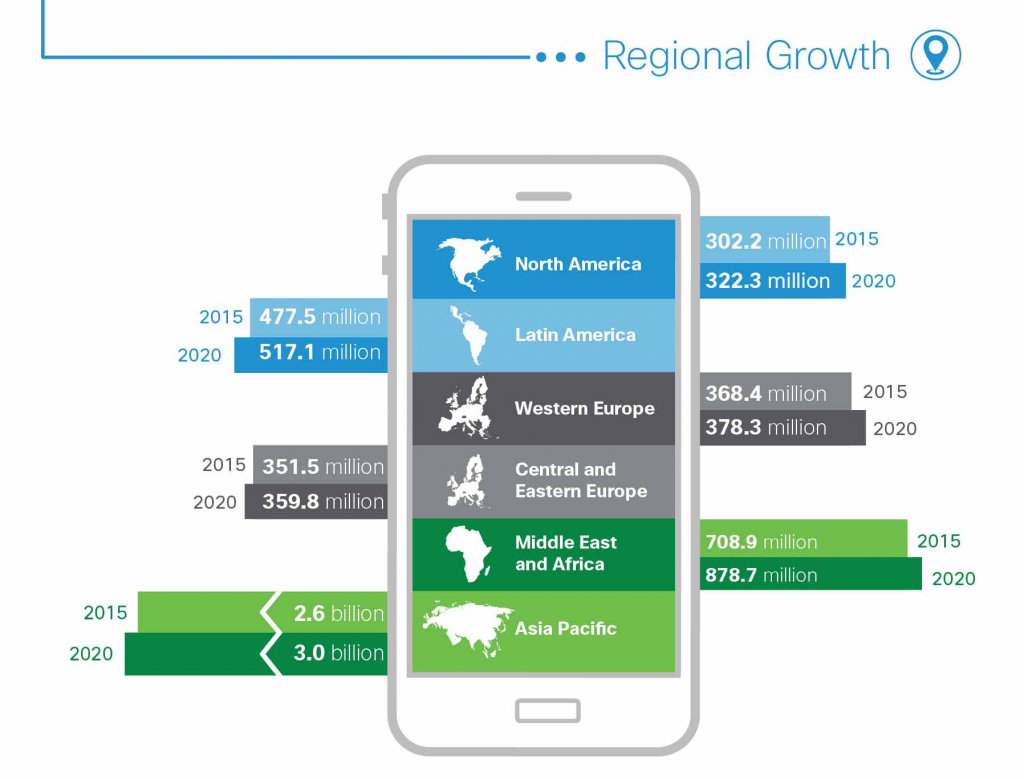Analysing Mobile Internet Video Trends 2015-2020
In this article I will examine the growing trends of Internet Mobile video and how consumer behaviour is rapidly adopting to a world of ‘always on content’ and discuss the impact on the underlying infrastructure. This is very important because we often assume that the Internet has infinite capacity and we can get frustrated by buffering, which wouldn’t happen with our satellite and terrestrial TV services.
This pattern also follows other observed trends in social media, namely twitter, facebook and instagram, which provide consumers and producers with a highly valuable return path on the content, that they’re engaged with. It’s also a double edged sword in what they can provide is both positive and negative feedback, this can affect the brand in unexpected ways.
The source of this analysis comes from Cisco’s excellent Visual Networking Index, updated annually, which tracks the growing usage patterns across mobile and non-mobile devices. The most recent mobile data is from February 2016 and makes a compelling argument for anyone involved in providing video services, to review your infrastructure hardware and software stacks, to meet this oncoming problem head on. As customers expectations have changed over the past few years, you’ll need be prepared to cope with a 50-100% traffic growth every year, for the next 4-5 years.
Population Growth
According to the US Census Bureau the world population will reach 8 Billion by 2025 and by 2020 there will be up to 5.5 billion mobile users across the globe. If we take a closer look at the individual regions, we can observe that the fastest growing location will be in Asia Pacific.

The data shows where the global opportunity lies, with up to 2.8 devices per capita in developed countries and over 1 elsewhere, which is provable in our modern connected world where your phone is the one device that you are never without.
 Continue reading
Continue reading



Recent Comments